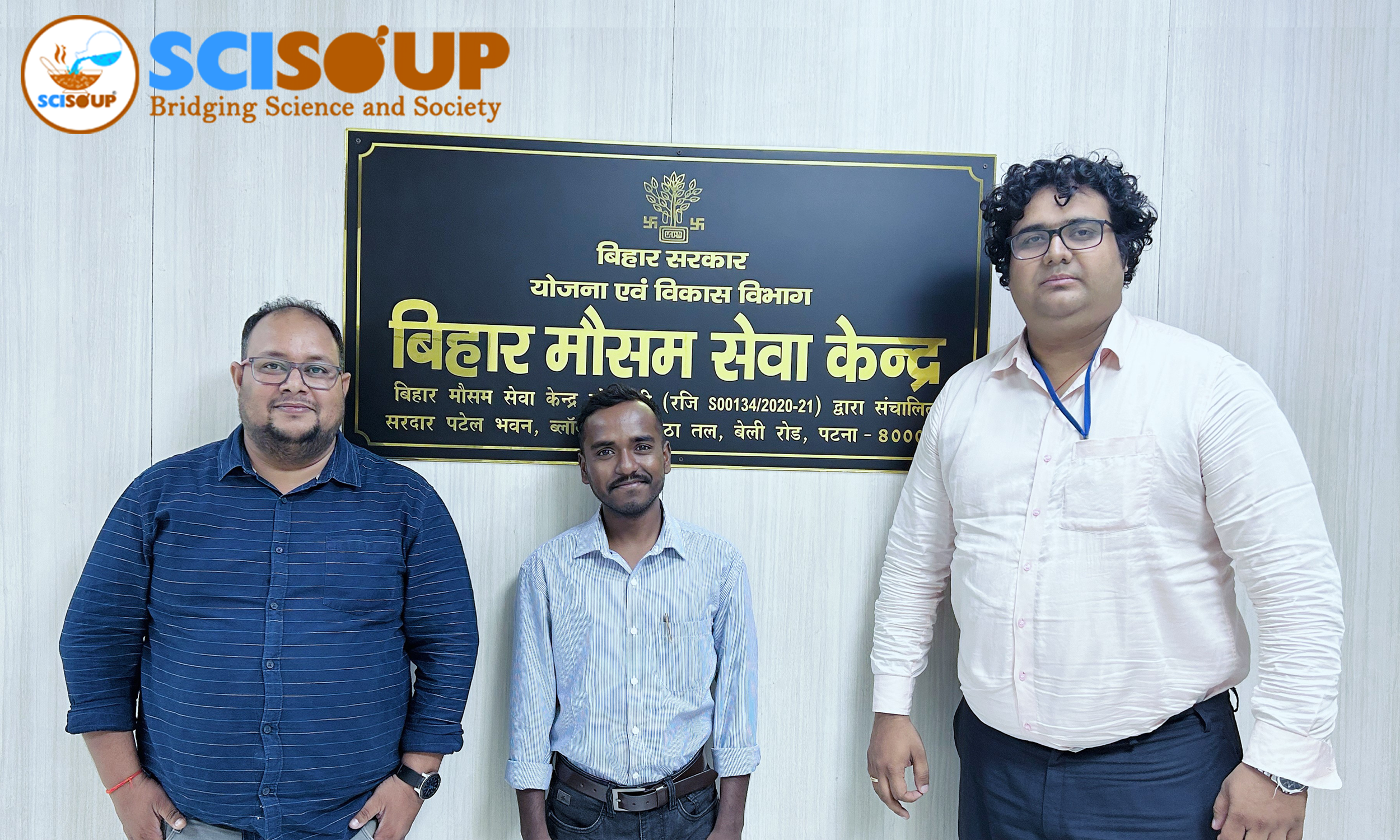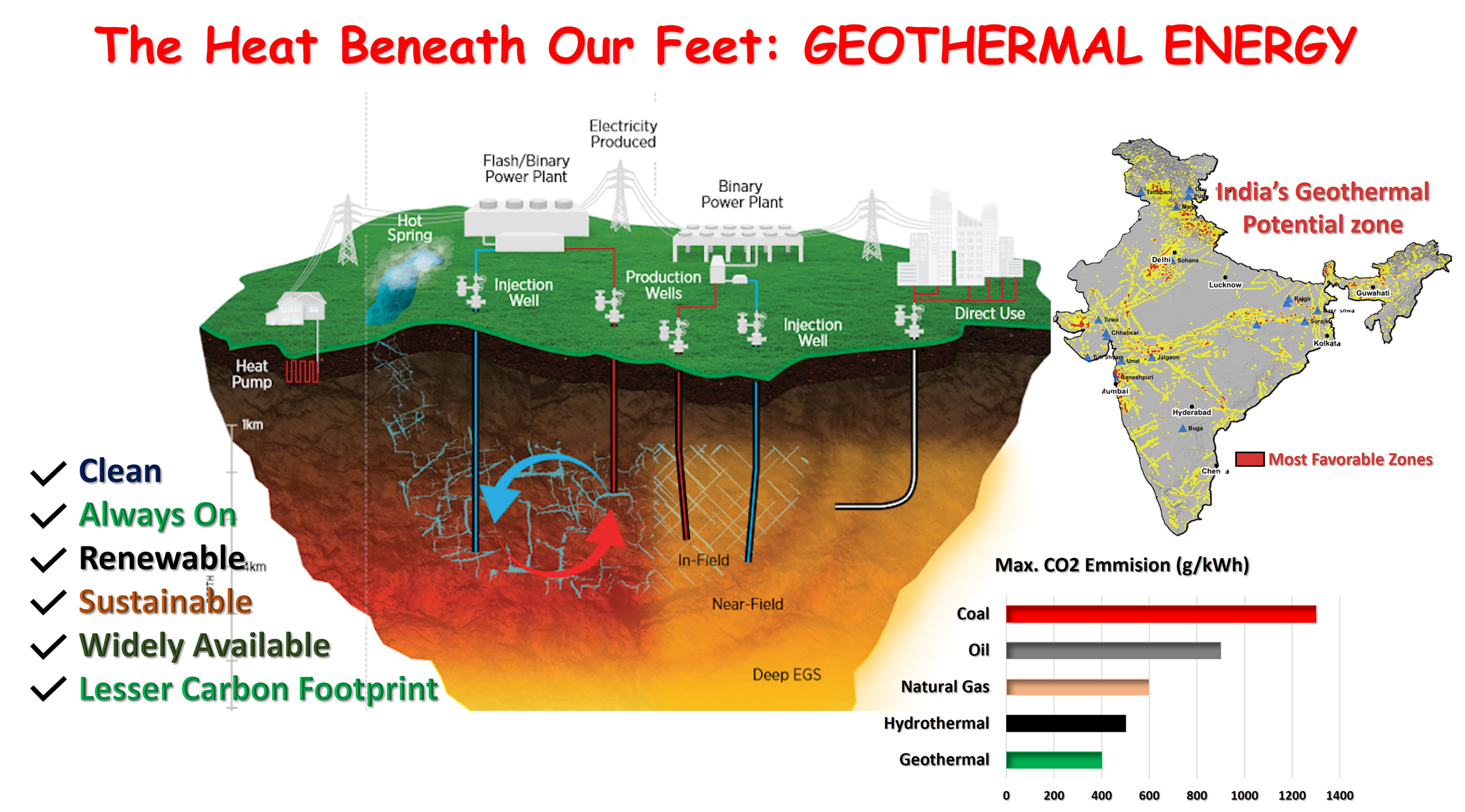
The study utilized Geographic Information System (GIS) technology to systematically evaluate and identify high-potential geothermal zones across India.
JULY 06, 2024 | By RATNESHWAR THAKUR
India continues to advance in renewable energy with notable progress in solar and wind power. However, geothermal energy, which harnesses the Earth's natural heat, remains largely untapped. A recent study has unveiled India's first geothermal potential map, identifying promising regions in the northern and western parts of the country.
The Earth's core generates immense heat, creating underground reservoirs of hot water and steam. This clean energy source, known as geothermal energy, can be utilized to generate electricity and power industrial operations.
As the world's third-largest energy consumer, India faces significant environmental and economic challenges due to its heavy reliance on fossil fuels. The country's rapid industrialization and growing population have outpaced its energy production capacity, driving the need for sustainable alternatives. Geothermal energy emerges as a promising solution.
The study utilized Geographic Information System (GIS) technology to systematically evaluate and identify high-potential geothermal zones across India. GIS, a mapping and analysis tool, was crucial in mapping India's geothermal landscape.
 Published in 'Renewable Energy', the research highlights India's significant geothermal potential, crucial for reducing fossil fuel dependence and cutting CO2 emissions. Using GIS and multi-criteria analysis, the study mapped high-potential geothermal zones, offering efficient exploration strategies to support sustainable development goals.
Researchers from Bihar Mausam Sewa Kendra comprehensively mapped India's geothermal potential, identifying key zones in Ladakh, Himachal Pradesh, Uttarakhand, Gujarat, and northeastern states. These regions exhibit unique geothermal characteristics, with the northwestern Himalayan region, including Ladakh's Puga, Chumithang, and Nubra Valley, showing particularly promising indicators of active heat reservoirs.
Published in 'Renewable Energy', the research highlights India's significant geothermal potential, crucial for reducing fossil fuel dependence and cutting CO2 emissions. Using GIS and multi-criteria analysis, the study mapped high-potential geothermal zones, offering efficient exploration strategies to support sustainable development goals.
Researchers from Bihar Mausam Sewa Kendra comprehensively mapped India's geothermal potential, identifying key zones in Ladakh, Himachal Pradesh, Uttarakhand, Gujarat, and northeastern states. These regions exhibit unique geothermal characteristics, with the northwestern Himalayan region, including Ladakh's Puga, Chumithang, and Nubra Valley, showing particularly promising indicators of active heat reservoirs.
Similarly, zones in Jammu and Kashmir, Himachal Pradesh, Uttarakhand, Haryana's Sohana, Rajasthan's Delhi-Aravalli series, Gujarat's Cambay rift, and eastern India—including Bihar, Jharkhand-West Bengal, and Odisha-Chhattisgarh—show significant geothermal potential, characterized by springs and fault systems.
The study supports several United Nations Sustainable Development Goals by highlighting geothermal energy's environmental benefits and its potential to enhance India's energy security and climate change mitigation efforts.
By identifying high-potential geothermal zones, this research provides a foundation for developing renewable energy sources that can reduce India's reliance on fossil fuels, lower greenhouse gas emissions, and improve energy security. These findings can guide policymakers, investors, and energy developers in fostering clean energy infrastructure, leading to a stable and affordable energy supply, improved air quality, and enhanced public health.
India's diverse geothermal landscape offers abundant opportunities for advancing exploration and utilization. Despite significant technical, environmental, and social challenges, investments in research, technology, and community engagement may help unlock geothermal energy's full potential, contributing to a sustainable energy future.
The research team included Avinash Kumar Chouhan, Rakesh Kumar, Abhishek Kumar Mishra.
Journal Reference:
Assessment of the geothermal potential zone of India utilizing GIS-based multi-criteria decision analysis technique
Disclaimer:
SciSoup claims no competing interest. To ensure accuracy and scientific relevance, this science blog has been reviewed by the research team associated with this study.
